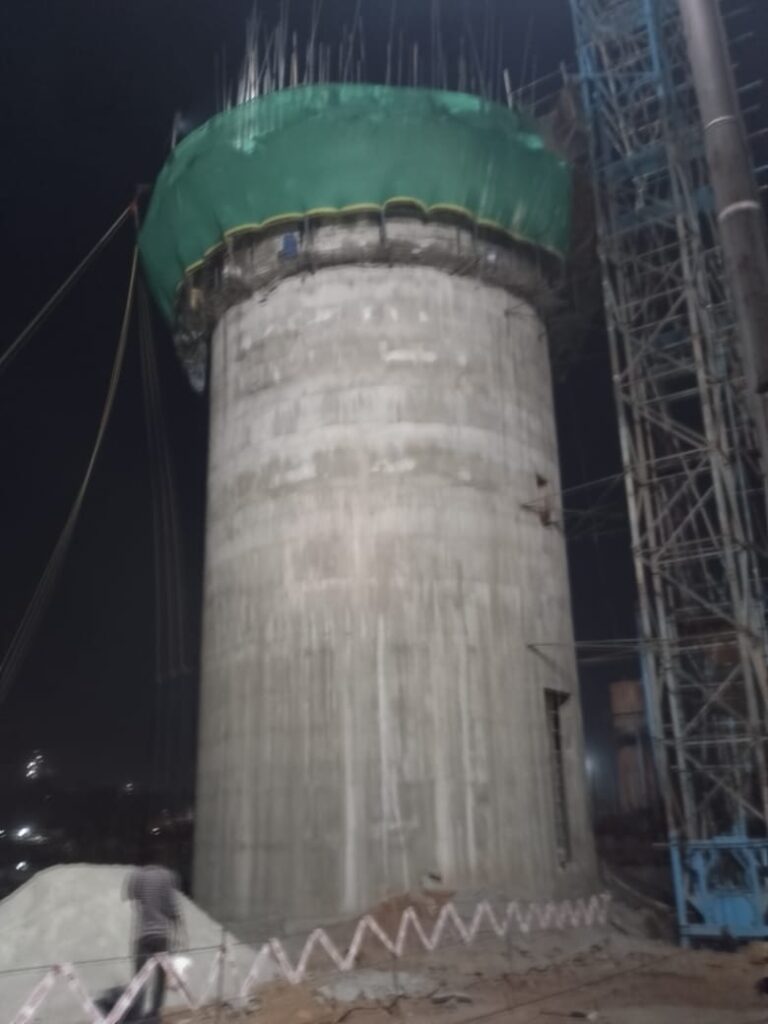1. Design Complexity
Designing an RCC chimney for a distillery plant involves navigating a myriad of complex factors, each crucial to the structure’s safety, efficiency, and compliance. At the outset, engineers must grapple with the intricacies of load-bearing capacity, wind resistance, and adherence to emissions regulations. The design process necessitates a deep understanding of the distillation process, the types of fuels burned, and the resulting emissions, all of which influence the chimney’s specifications.

Firstly, load-bearing capacity considerations are paramount. The chimney must support its weight, the weight of the materials used in its construction, as well as external factors such as wind and seismic loads. This entails meticulous structural analysis and design to ensure the chimney can withstand these forces without compromising its integrity.
Secondly, wind resistance is a critical factor, especially for tall structures like distillery chimneys. Engineers must conduct thorough wind load analysis to determine the magnitude and direction of wind forces acting on the chimney and design it to resist these forces effectively. Failure to account for wind loads could result in structural instability or even collapse, posing significant safety risks.
Additionally, compliance with emissions regulations adds another layer of complexity to the design process. The chimney must be designed to facilitate the efficient dispersion of emissions, minimizing their impact on the surrounding environment and ensuring compliance with local air quality standards. This may involve specifying the height, diameter, and internal configuration of the chimney to optimize airflow and dispersion patterns.
Moreover, factors such as temperature management, corrosion resistance, and foundation design further complicate the design process. Engineers must select appropriate materials, insulation systems, and foundation types to address these challenges while ensuring the chimney meets performance requirements and regulatory standards.
In essence, the design of an RCC chimney for a distillery plant demands a holistic approach that considers a multitude of interrelated factors. It requires expertise in structural engineering, environmental science, and regulatory compliance to develop a design that is safe, efficient, and compliant with applicable standards and regulations.
2 Height Requirements:

Distillery chimneys often need to reach considerable heights to ensure effective dispersion of emissions and compliance with environmental regulations. However, the necessity for height poses multifaceted challenges throughout the construction process.
Primarily, the structural stability of tall chimneys becomes a major concern. As height increases, so does the potential for structural instability, especially in the face of environmental forces such as wind and seismic activity. Engineers must meticulously calculate loads, stresses, and potential modes of failure to design a chimney capable of withstanding these forces. This involves complex structural analysis and may necessitate innovative design solutions such as reinforced concrete or steel bracing systems to provide additional support and mitigate the risk of collapse.
Moreover, the construction of tall chimneys presents logistical challenges. Transporting construction materials to elevated heights becomes more difficult and costly, requiring specialized equipment such as cranes and hoists. Additionally, ensuring the safety of construction workers at height becomes a paramount concern, necessitating stringent safety protocols, fall protection measures, and comprehensive training programs.
Furthermore, the sheer scale of tall chimney construction projects can lead to extended construction timelines and increased costs. The complexity of erecting tall structures requires meticulous planning, coordination, and execution, with any delays or setbacks potentially having cascading effects on project schedules and budgets.
In addition, the environmental impact of tall chimney construction cannot be overlooked. Construction activities at height may generate noise, dust, and emissions, impacting nearby communities and ecosystems. Implementing effective mitigation measures, such as noise barriers, dust suppression systems, and environmentally friendly construction practices, is essential to minimize adverse environmental effects and ensure regulatory compliance.
Overall, meeting the height requirements for distillery chimneys necessitates a comprehensive approach that addresses structural, logistical, safety, and environmental considerations. By carefully navigating these challenges, construction teams can successfully erect tall chimneys that meet the functional, regulatory, and safety requirements of distillery operations.
